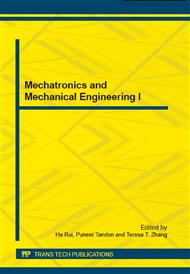p.148
p.153
p.158
p.163
p.170
p.175
p.185
p.191
p.194
Rotor-Dynamic Characteristic Evaluation of Generator Geothermal Power Plant Using Finite Element Method
Abstract:
Dynamic characteristics of a critical speed of the rotor components at generator geothermal power plant is evaluated using finite element method. In this study, the critical speed is evaluated based on the over speed scenario at 100%, 120% and 150% of rated speed. The critical speed of the rotor is investigated in the Campbell diagram, which shows the relationship between natural frequency and rotational velocity of the system. Based on the rotordynamic evaluation using finite element, the critical speed at 100% and 120% of the operating speed occurs in the rotational speed of 2750 and 2837 rpm, while at 150%, the critical rotation occurs in the rotational speed of 2750, 2762 and 4051 rpm. It can be concluded that the speed ranges are the critical speed or the resonance region which can be as a direct cause of the component damage, therefore the operating speed should not work too long on that critical speed.
Info:
Periodical:
Pages:
170-174
Citation:
Online since:
October 2014
Authors:
Price:
Сopyright:
© 2014 Trans Tech Publications Ltd. All Rights Reserved
Share:
Citation:


